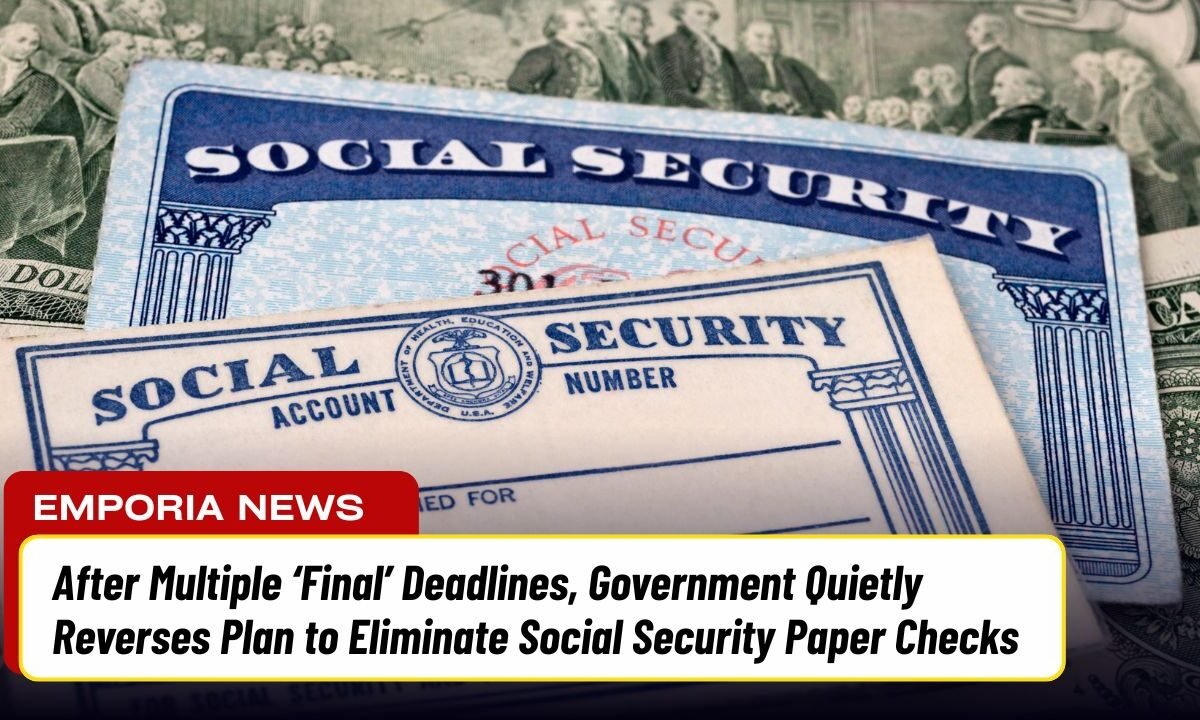The U.S. government had initially planned to transition from paper checks to electronic payments for Social Security and other federal benefits by 2025, with a firm deadline set for September 30, 2025.
This change was promoted as a necessary modernization, aiming to increase the speed, security, and cost-effectiveness of benefit disbursements.
However, the government has now taken a more relaxed stance, offering relief to millions of older Americans and others who still rely on traditional paper checks.
Why the Government Wants to Go Digital
The primary driver behind this transition is the promise of faster, safer, and more affordable payments. By moving to electronic payments, the government can reduce fraud risks, save on postage costs, and enhance overall efficiency.
Currently, a remarkable 99.4% of beneficiaries already receive payments electronically. The Direct Express® Card and direct deposit are the two primary digital payment options.
Paper checks, by comparison, pose significant risks. They are vulnerable to being lost, delayed, or stolen, with the Treasury Department reporting that paper checks are 16 times more likely to be tampered with or go missing than electronic payments.
The Initial Plan to End Paper Checks
Back in August 2025, the Treasury Department made it clear that, starting September 30, 2025, most paper checks for federal benefits would be phased out.
This was part of the larger “Modernizing Payments to and From America’s Bank Accounts” initiative, which the Social Security Administration (SSA) supported. They strongly encouraged individuals to adopt electronic payment methods, including:
- Direct deposit into a personal bank account.
- Direct Express® Card, a prepaid debit card for individuals without a bank account.
A Shift in Tone: Paper Checks Will Still Be Allowed in Some Cases
By late September, the SSA softened its approach. In a blog post, they confirmed that individuals who are unable to use electronic payments would still have the option to receive paper checks. This includes:
- Seniors who struggle with digital technology.
- Rural residents with limited or no access to the internet or nearby banks.
- Individuals without bank accounts or smartphones.
The government emphasized that while the goal is to transition as many people as possible to digital payments, those who cannot make the switch will not lose their benefits. Instead of an abrupt cutoff, the transition will be gradual and flexible.
Why This Change Matters
For many older Americans, paper checks are a reliable and familiar method of receiving their benefits. A sudden end to paper checks could have caused anxiety or resulted in missed payments, especially for those in remote locations or unfamiliar with online banking systems.
The SSA’s updated message offers reassurance that if digital payments aren’t feasible, paper checks will remain an option.
This shift demonstrates that the government is listening to the needs of all beneficiaries. It acknowledges that not everyone can keep up with technological changes and that such important transitions must be carried out thoughtfully and with care.
Steps to Take if You Still Receive Paper Checks
If you are one of the individuals still receiving paper checks, you have several options to switch to electronic payments:
- Switch to direct deposit: If you have a bank account, this is the safest and most convenient method.
- Apply for a Direct Express® Card: This prepaid debit card works like a regular debit card, allowing you to make purchases, withdraw cash at ATMs, and more.
- Request a waiver: If you’re unable to switch to electronic payments, contact the U.S. Treasury’s payment center to explain your situation. You may qualify to continue receiving paper checks.
Balancing Progress with Accessibility
The government’s push to modernize the payment system is not just about saving money but ensuring that every beneficiary receives their benefits in a safe, efficient, and reliable manner.
The SSA’s softened approach reflects a commitment to fairness and accessibility, recognizing that some individuals may need more time and assistance to make the switch to electronic payments.
What’s Next for Paper Check Users?
The September 30, 2025 deadline has not been entirely removed, but it is no longer a hard cutoff. Instead, the SSA and Treasury Department are focusing on education, outreach, and support programs.
Expect more help centers, advertisements, and local initiatives to assist people in making the transition to digital payments.
Local banks, senior citizen groups, and community centers may also partner with the government to help individuals set up their electronic payment methods.
While the government’s goal to phase out paper checks is to enhance the speed, safety, and efficiency of benefit payments, the new approach shows empathy and consideration for those who may struggle with the shift to digital.
The flexible, gradual transition means that beneficiaries who cannot go digital won’t be left behind, and paper checks will still be available where necessary.




